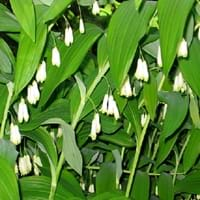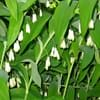Life Span
Annual
Annual and Perennial
Type
Bulb or Corm or Tuber
Bulb or Corm or Tuber
Origin
Eastern Europe, Southern Europe, Mediterranean, Turkey, Western Asia
Central America, South America
Types
Mountain silverbell , Rosea
Vine, Flowering plant
Habitat
Floodplains, low mountains, Lower slopes, secondary forest
All sorts of environments, Along Railroads, Banks, Moist Ditches, Roadsides, rocky banks of streams
USDA Hardiness Zone
5-9
10-13
Habit
Clump-Forming
Vining/Climbing
Minimum Width
Not Available
Flower Color
White
Purple, Rose
Flower Color Modifier
Bicolor
Bicolor
Fruit Color
Not Available
Not Available
Leaf Color in Spring
Green
Purple, Dark Green, Black
Leaf Color in Summer
Light Green
Light Green
Leaf Color in Fall
Several shades of Green
Several shades of Green
Leaf Color in Winter
Light Green
Light Green
Leaf Shape
Acuminate
Acicular
Plant Season
Spring
Spring, Summer, Fall, Winter
Sunlight
Full Sun, Partial Sun, Partial shade
Full Sun, Partial Sun
Growth Rate
Fast
Very Fast
Type of Soil
Not Available
Clay, Loam, Sand
The pH of Soil
Not Available
Acidic, Neutral, Alkaline
Soil Drainage
Well drained
Well drained
Bloom Time
Spring, Late Spring
Late Spring, Early Summer, Summer, Late Summer, Early Fall, Fall, Late Fall
Tolerances
Drought
Drought
Where to Plant?
Ground
Container, Ground
How to Plant?
Layering, Seedlings, Stem Cutting
Cuttings, Leaf Cutting, Tuber propagation
Plant Maintenance
Medium
Medium
Watering Requirements
occasional watering once established
Keep the Soil well drained, Needs very little water
In Summer
Lots of watering
Lots of watering
In Spring
Moderate
Moderate
In Winter
Average Water
Average Water
Soil pH
Not Available
Acidic, Neutral, Alkaline
Soil Type
Not Available
Clay, Loam, Sand
Soil Drainage Capacity
Well drained
Well drained
Sun Exposure
Full Sun, Partial Sun, Partial shade
Full Sun, Partial Sun
Pruning
Prune grass to maintain level, Remove damaged leaves, Remove dead branches, Remove dead leaves
Remove damaged leaves, Remove dead branches, Remove dead leaves
Fertilizers
All-Purpose Liquid Fertilizer
All-Purpose Liquid Fertilizer
Pests and Diseases
Pests and diseases free
Red blotch
Plant Tolerance
Drought and Salt
Drought
Flower Petal Number
Single
Single
Foliage Texture
Medium
Coarse
Foliage Sheen
Glossy
Matte
Attracts
Bees, Flying insects
Aphids, Beetles, Cutworms, Insects, Mites, Whiteflies
Allergy
Unknown
Abdominal pain, allergic reaction, Nausea, Skin rash, Twitching of face
Aesthetic Uses
along a porch, deck or patio, Beautification, Cottage Garden, Showy Purposes, Wild gardens
Not Used For Aesthetic Purpose
Beauty Benefits
Not Available
Not Available
Environmental Uses
Air purification
Air purification
Medicinal Uses
Unknown
Cures constipation, Fiber, Low calories, lowering blood pressure, Potassium, ß-carotene, Vitamin A, Vitamin C
Part of Plant Used
Not Available
Leaves, Root, Shoots, Stem, Tuber
Other Uses
Decoration Purposes
Starch, Used As Food, Used as Ornamental plant
Used As Indoor Plant
No
Sometimes
Used As Outdoor Plant
Yes
Yes
Garden Design
Container, Cutflower, Mixed Border, Rock Garden / Wall
Container, Edible, Groundcover, Hanging Basket, Herb / Vegetable, Mixed Border, Rock Garden / Wall, Vine
Botanical Name
ORNITHOGALUM nutans
IPOMOEA batatas 'Blackie'
Common Name
Drooping Star-of-Bethlehem, Nodding Star-of-Bethlehem, Silver Bells
Blackie Sweet Potato Vine, Sweet Potato Vine
In Hindi
Silver bells
शकरकन्द
In German
Silver bells
Süßkartoffel
In French
Silver bells
Patate douce
In Spanish
Silver bells
Ipomoea batatas
In Greek
Silver bells
Sweet potato
In Portuguese
Silver bells
Batata-doce
In Polish
Silver bells
Wilec ziemniaczany
In Latin
Silver bells
Ipomoea batatas
Phylum
Angiosperms
Tracheophyta
Class
Magnoliopsida
Magnoliopsida
Family
Asparagaceae
Convolvulaceae
Clade
Eudicots
Angiosperms, Asterids, Eudicots
Tribe
Not Available
Not Available
Subfamily
Not Available
Not Available
Number of Species
Not Available
Season and Care of Silver Bells and Sweet Potato Vine
Season and care of Silver Bells and Sweet Potato Vine is important to know. While considering everything about Silver Bells and Sweet Potato Vine Care, growing season is an essential factor. Silver Bells season is Spring and Sweet Potato Vine season is Spring. The type of soil for Silver Bells is Not Available and for Sweet Potato Vine is Clay, Loam, Sand while the PH of soil for Silver Bells is Not Available and for Sweet Potato Vine is Acidic, Neutral, Alkaline.
Silver Bells and Sweet Potato Vine Physical Information
Silver Bells and Sweet Potato Vine physical information is very important for comparison. Silver Bells height is 25.40 cm and width 30.50 cm whereas Sweet Potato Vine height is 15.00 cm and width Not Available. The color specification of Silver Bells and Sweet Potato Vine are as follows:
Silver Bells flower color: White
Silver Bells leaf color: Green
Sweet Potato Vine flower color: Purple and Rose
- Sweet Potato Vine leaf color: Purple, Dark Green and Black
Care of Silver Bells and Sweet Potato Vine
Care of Silver Bells and Sweet Potato Vine include pruning, fertilizers, watering etc. Silver Bells pruning is done Prune grass to maintain level, Remove damaged leaves, Remove dead branches and Remove dead leaves and Sweet Potato Vine pruning is done Remove damaged leaves, Remove dead branches and Remove dead leaves. In summer Silver Bells needs Lots of watering and in winter, it needs Average Water. Whereas, in summer Sweet Potato Vine needs Lots of watering and in winter, it needs Average Water.





